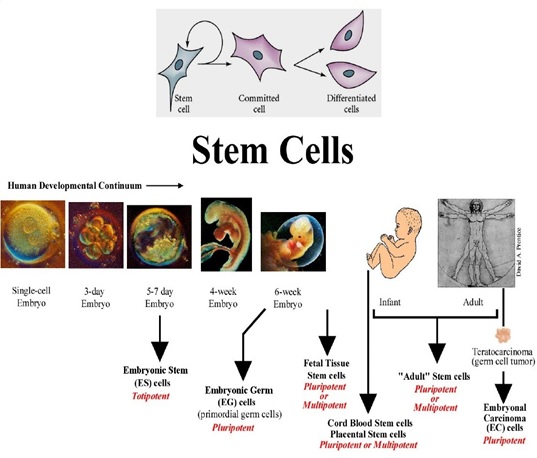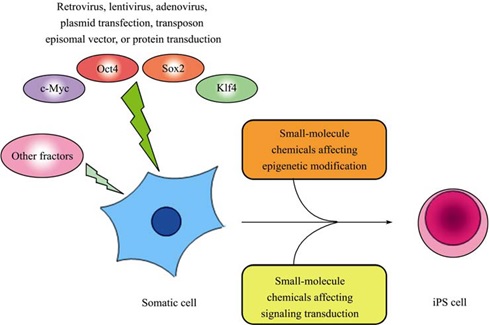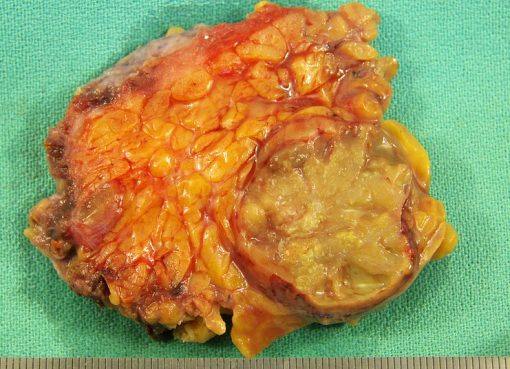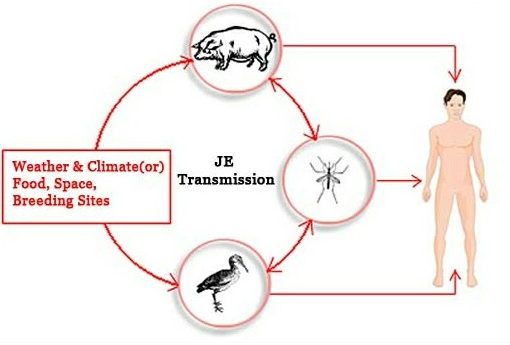Dr. Bhabesh Mili1 and Dr. Amrit Gogoi2
1Assistant Professor, Department of Veterinary Physiology & Biochemistry 2Assistant Professor, Department of Veterinary Pathology
College of Veterinary Sciences & Animal Husbandry
Central Agricultural University,
Jalukie-797110, Peren, Nagaland.
Email ID: bhabamili@gmail.com, mili.cvsngl@govt.in Mobile No: 8131891253
Introduction:
Stem cells are the unspecialized cells which can make exact copies of them and have the ability to differentiate into one or more specialized cells of the body. These cells are found in the early embryonic stage to the end of the life of a human as well as mammals. Stem cells possess normal genetic make-up and can be grown almost for an indefinite period in in-vitro culture system. These cells have multi-differentiation potential to become all or more than 200 different cell types of the body, can generate tissue in damaged area in-vivo, with minimal risk of rejection and side effects, make their use indispensable for treatment of many incurable diseases including regenerative medicine. Throughout the globe, researchers are focusing on different aspects of stem cells application in the area of health and production including therapy for many incurable diseases of human and animals. However, the underlying mechanism of stem cell-based therapy is not fully understood, hence rigorous experiments are going on across the globe to manipulate these cells into specific cell types both in-vitro and in-vivo for treatment of various fatal diseases.
Classification of Stem cells:
In general, stem cells are broadly classified into two categories, viz. embryonic and adult stem cells. The embryonic stem cells are derived from an embryo at different cell stages and they are of two types: totipotent stem cells and embryonic stem cells.
- Totipotent stem cells: Totipotent stem cells are the unspecialized, undifferentiated type of cells and have the potential to give rise to the whole individual.
-
Embryonic stem cells: The embryonic stem cells (ESCs) are originated from the inner cell mass (ICM) of an early-stage embryo. ESCs can be obtained in-vivo and in- vitro parthenogenetically or even from the cloned embryo. Gail Martin coined the term “Embryonic stem cells” to pluripotent cells derived from the inner cell mass (ICM) of pre-implantation mammalian blastocysts. Once removed from the blastocyst, the cells of the ICM can be cultured under special condition into ESCs. These cells are capable of differentiating into all three embryonic germ layers such as endoderm, mesoderm and ectoderm but they cannot contribute to generate the extra embryonic membrane (placenta).

The adult stem cells are found in different fetal and adult tissues of an organism and can be derived from the postnatal somatic tissues. Adult stem cells are of various types, hematopoietic stem cells, mesenchymal stem cells (MSCs), neural stem cells, skin stem cells, retinal stem cells, spermatogonial stem cells, etc. MSCs can be isolated from a wide range of tissues including bone marrow, adult muscle, dental pulp of deciduous baby teeth, brain, adipose tissue, amniotic fluid etc. Umbilical cord blood stem cells are a typical example of fetal origin stem cells.
On the basis of differentiation potential, the adult stem cells can be divided into multipotent stem cells and unipotent stem cells.
- The multipotent stem cells can give rise to several terminally differentiated cell types that constitute a specific tissue or organ, e.g. hematopoietic stem cells, which can give rise to all diverse blood cells (erythrocytes, leucocytes and thrombocytes).
- The unipotent stem cells can differentiate into a single cell type only, e.g. epidermal stem cells or spermatogonial stem cells or neural stem cells, and they differentiate respectively into keratinocytes, spermatozoa and neurons only.
An interesting remarkable achievement in stem cell research is the reprogramming of somatic cells into a pluripotent state as similar to that of embryonic cells (ESCs) by forced expression of stemness-related genes, viz. oct4, klf4, sox2 and cMyc (induced pluripotent stem cells).

Therapeutics Application of Stem cells:
The stem cells based therapy is evolving rapidly from bench to clinics with promising results in human as well as animal health. The main aim of any stem cell therapy is to repair a damaged tissue that cannot heal itself. In the last 20 years, considerable attention has been given to the research on stem cells based therapy. The prerequisite for transplantation of stem cells for treatment includes isolation, enrichment, processing and characterization of cells. The cells can be isolated from patient-specific (autologous), same species (allogenic) and different species (xenogenic). The route for transplantation is either by local delivery into the damaged area or by systemic infusion.
Therapeutic application of embryonic stem cells has got certain limitations, because of the ethical issues to obtain embryo, isolating them as well as their large-scale production. So, adult stem cells are the best choice for stem cell therapy. Among all adult stem cells, MSCs are relatively easy to isolate and they expand in the in-vitro culture system. They have the property of multipotency, paracrine effects, migratory behaviour, ethical considerations and strong immunosuppressive effect on the host immune system by alternation the relative level of pro- and anti-inflammatory cytokine expression by T-cells. MSCs can also cross major histocompatibility complex (MHC) barrier without the need for immune suppression and could be used as an “off-the-shelf” therapeutic product since tissue matching between MSCs donor and the recipient does not appear to be prerequisite which gives them a major advantage over many other cells for therapeutic application. Three basic mechanisms have been proposed to explain how stem cells could repair tissue injury: creation of a milieu by secreting cytokines and growth factors that enhances regeneration of endogenous cells, differentiation into a host specific or tissue specific cells types in the injury area and fusion with the host cells.
There are good numbers of pre-clinical and clinical data available on the therapeutic potentiality of stem cells for a wide range of ailments across the world in both medical and veterinary sciences. The possible areas of application of stem cell therapy include Breast cancer, Ewing’s sarcoma, Neuroblastoma (sympathicoblastoma), Kidney cancer, Type 1 diabetes mellitus, Parkinson’s disease, Huntington’s disease, Celiac Disease, Cardiac failure, Muscle damage, Neurological disorders, Spinal cord injury, Bone/fracture, Skin replacement, Acute lymphoblastic leukemia (ALL), Acute myeloid leukemia (AML), Acute biphenotypic leukemia, Poorly differentiated acute leukemia, Chronic myeloid leukemia (CML), Chronic lymphocytic leukemia (CLL), Juvenile chronic myeloid leukemia (JCML), Juvenile myelomonocytic leukemia (Naegeleg leukemia) (JMML), Beta-thalassemia, Pure red cell aplasia, Sickle cell anemia, Cartilage repair, Tendon and ligament repair, Ischemic Brain injury, Myocardial infarcts, Hepatic disease etc. Although stem cell therapy has brought new hope for numerous incurable diseases, there are certain fundamental questions to be addressed in respect of its clinical application.

Conclusion:
Stem cellbiology has witnessed remarkable advances and has promising biomedical applications. Especially, it is offering an alternative therapeutic potential for many incurable diseases for both Medical and Veterinary practice. On the other hand, stem cells based therapy require specialized laboratory facilities, trained personnel, optimization of timing, route of administration, formulation and dosing with the in-vivo tracking of the implanted cells. Ensuring wide-scale availability of such facilities and expertise will offer wider opportunity and facilitation in the advancement of stem cell therapy as well as commercialization.



